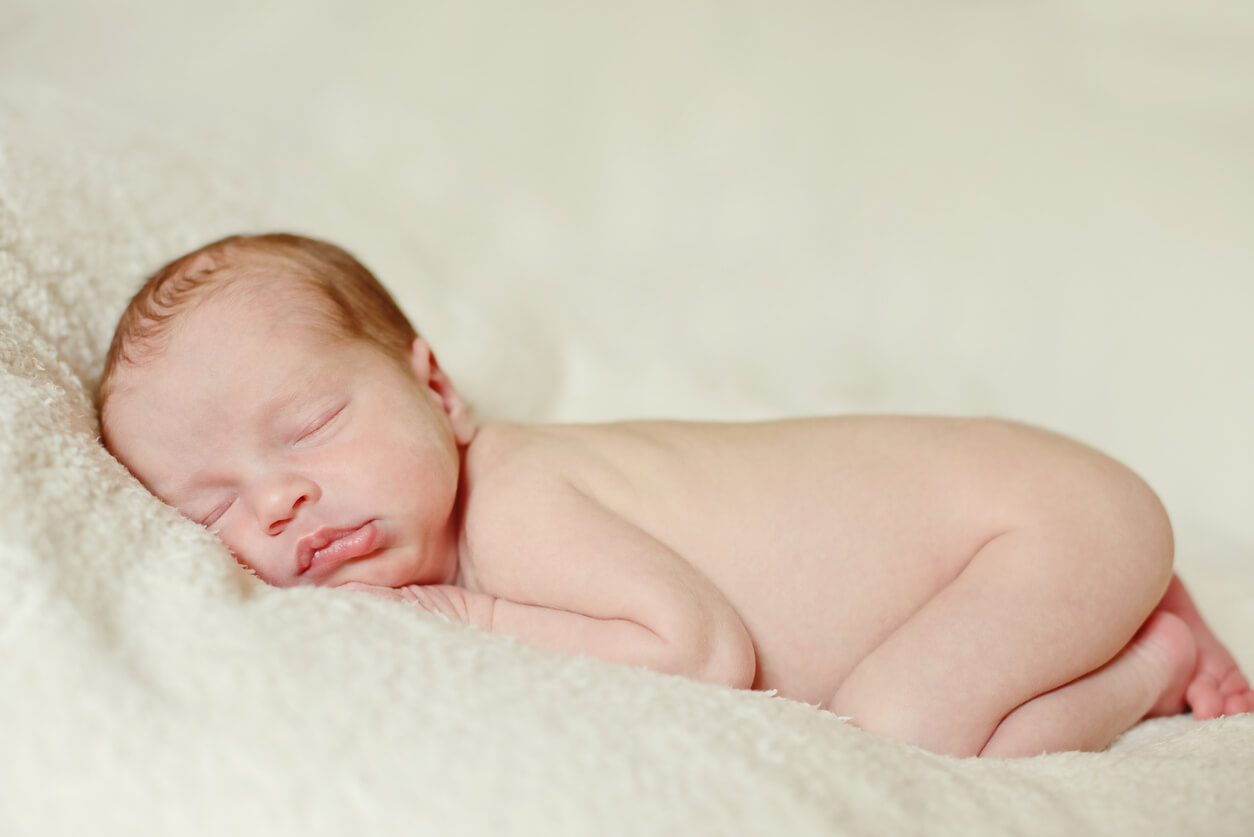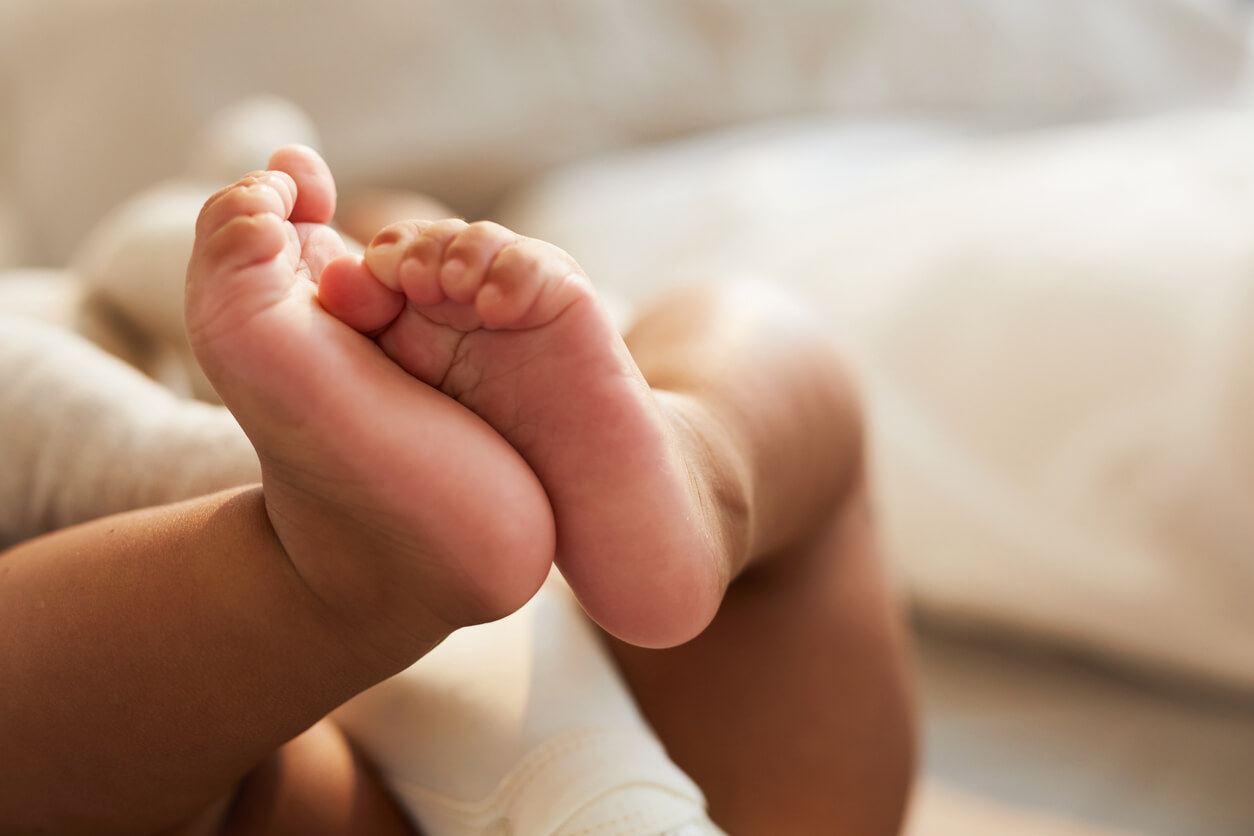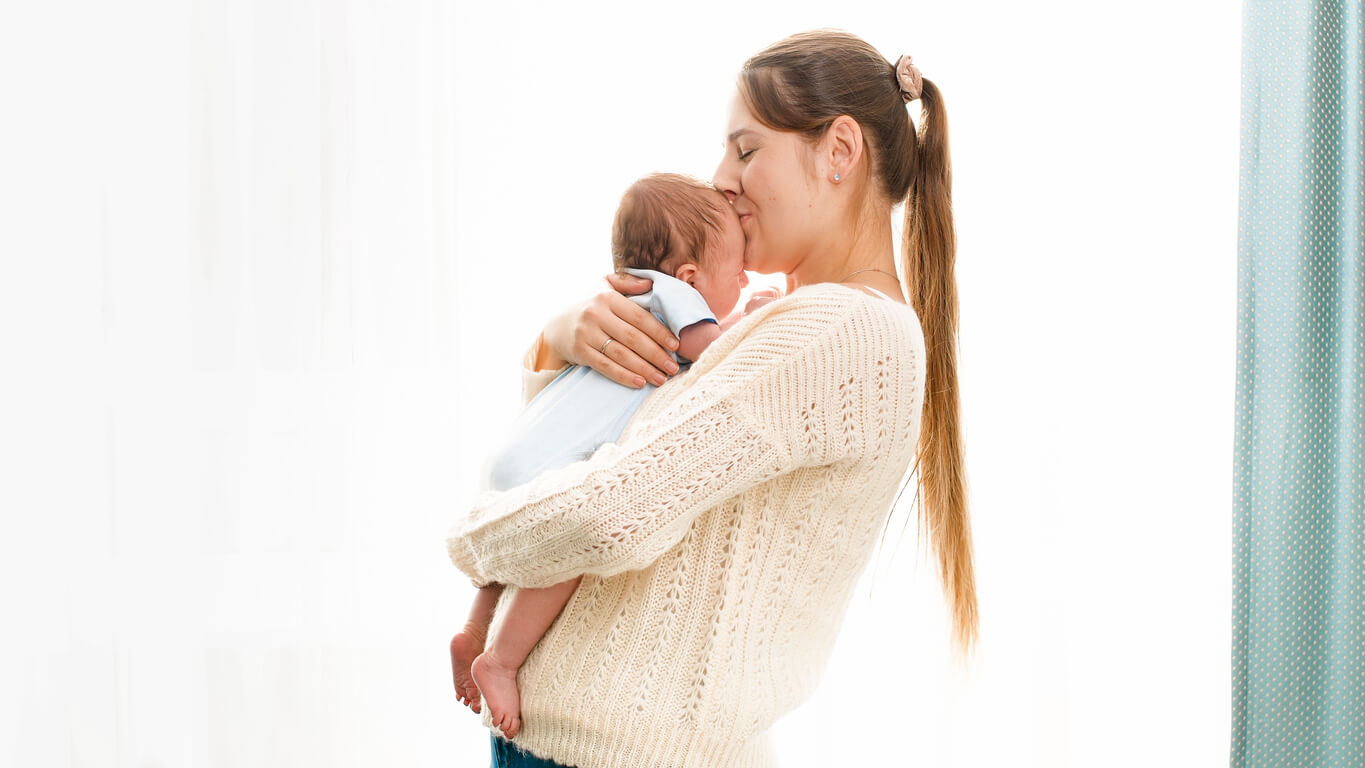The Frog-Leg Position: Why Is It Important for Babies?

When a baby comes into your life, you need to know the importance of the frog-leg position for their health. In general, there are many details that we must know to offer well-being to our little ones and this matter is one that many of us may be unaware of. It may be very difficult to understand, at first, how performing simple movements when carrying our newborns could actually be dangerous.
The frog-leg position is an essential posture for newborns, as it guarantees the correct care and protection of the child. It ensures proper care and the prevention of orthopedic problems. Let’s remember that babies come from being in the fetal position for many months inside the mother’s womb, with their knees and hips completely flexed.
Therefore, babies also need to take their time to stretch their bodies. It’s up to us to pay attention to the way we carry them to prevent them from suffering bone injuries or lameness. Learn how to best care for your child during the first months of life.

The frog-leg position for babies
When we carry our babies in our arms, we tend to hold them horizontally in order to feed them, but we also tend to rest them on our chests with their heads up. That position, where we spread their legs apart with bent knees and support their hips on our steady arm, is the froggy position. And this is the correct way to hold them to take care of their body.
Some pediatric and orthopedic specialists recommend a series of exercises for babies to correctly elongate and flex each limb in time. Carrying out these activities requires a lot of delicacy and attention.

What should you take into account regarding your baby’s exercises?
- The stretching and bending exercises of your child’s legs require a great deal of willingness and dedication on your part. Don’t do it if you’re in a hurry or if you have other urgent matters to attend to.
- In addition, it’s important to keep in mind that the exercises recommended by the doctor should be performed with few repetitions, in order to prevent any type of injury.
- Keep in mind that, in any case, if you stretch your child’s legs abruptly, you put them at risk of hip slippage. And this could end in dislocation.
- The danger of executing the suggested activities carelessly is that babies are so flexible, they might not feel pain despite having suffered an injury.
In summary, care must be taken when performing the activities suggested by your baby’s pediatrician. One of the most common hip separation or dislocation problems arises when the child is held in an improper posture.

The worst postures for a baby
Something as simple as supporting a child in the wrong kind of baby carrier could cause damage to a joint. Likewise, the International Hip Dysplasia Institute has indicated that stressing a baby’s legs, knees, and ankles can also put their health at risk.
“Hip dysplasia is a general term for instability, dislocation, or shallowness of the infant hip socket.”
-International Hip Dysplasia Institute-
To detect any of these problems, we must pay attention to the child’s legs, especially if there’s any asymmetry. Also, we can detect a problem when the hip looks tilted to one side. Finally, if you notice that the baby has problems crawling, you need to see a doctor and tend to the problem early on.
In any of these situations, it’s important to know that there are treatments to correct them. What’s essential is to make sure that your baby maintains the frog-leg position as long as they need to, that you treat them gently, and that you go to the doctor in case of any doubt.
When a baby comes into your life, you need to know the importance of the frog-leg position for their health. In general, there are many details that we must know to offer well-being to our little ones and this matter is one that many of us may be unaware of. It may be very difficult to understand, at first, how performing simple movements when carrying our newborns could actually be dangerous.
The frog-leg position is an essential posture for newborns, as it guarantees the correct care and protection of the child. It ensures proper care and the prevention of orthopedic problems. Let’s remember that babies come from being in the fetal position for many months inside the mother’s womb, with their knees and hips completely flexed.
Therefore, babies also need to take their time to stretch their bodies. It’s up to us to pay attention to the way we carry them to prevent them from suffering bone injuries or lameness. Learn how to best care for your child during the first months of life.

The frog-leg position for babies
When we carry our babies in our arms, we tend to hold them horizontally in order to feed them, but we also tend to rest them on our chests with their heads up. That position, where we spread their legs apart with bent knees and support their hips on our steady arm, is the froggy position. And this is the correct way to hold them to take care of their body.
Some pediatric and orthopedic specialists recommend a series of exercises for babies to correctly elongate and flex each limb in time. Carrying out these activities requires a lot of delicacy and attention.

What should you take into account regarding your baby’s exercises?
- The stretching and bending exercises of your child’s legs require a great deal of willingness and dedication on your part. Don’t do it if you’re in a hurry or if you have other urgent matters to attend to.
- In addition, it’s important to keep in mind that the exercises recommended by the doctor should be performed with few repetitions, in order to prevent any type of injury.
- Keep in mind that, in any case, if you stretch your child’s legs abruptly, you put them at risk of hip slippage. And this could end in dislocation.
- The danger of executing the suggested activities carelessly is that babies are so flexible, they might not feel pain despite having suffered an injury.
In summary, care must be taken when performing the activities suggested by your baby’s pediatrician. One of the most common hip separation or dislocation problems arises when the child is held in an improper posture.

The worst postures for a baby
Something as simple as supporting a child in the wrong kind of baby carrier could cause damage to a joint. Likewise, the International Hip Dysplasia Institute has indicated that stressing a baby’s legs, knees, and ankles can also put their health at risk.
“Hip dysplasia is a general term for instability, dislocation, or shallowness of the infant hip socket.”
-International Hip Dysplasia Institute-
To detect any of these problems, we must pay attention to the child’s legs, especially if there’s any asymmetry. Also, we can detect a problem when the hip looks tilted to one side. Finally, if you notice that the baby has problems crawling, you need to see a doctor and tend to the problem early on.
In any of these situations, it’s important to know that there are treatments to correct them. What’s essential is to make sure that your baby maintains the frog-leg position as long as they need to, that you treat them gently, and that you go to the doctor in case of any doubt.
All cited sources were thoroughly reviewed by our team to ensure their quality, reliability, currency, and validity. The bibliography of this article was considered reliable and of academic or scientific accuracy.
- Acuña, E. L., & Ruiz, M. S. (2014). El porteo ergonómico. Pediatría Integral, 18(10), 774-780.
- Instituto Internacional de Displasia de Cadera (2018). Entendiendo la displasia de cadera. Lactantes y niños: prevención de la displasia de cadera. Recuperado el 4 de enero de 2022, de: https://hipdysplasia.org/infant-child/preventing-hip-dysplasia/
- Mera, M. K. R., Castillo, M. M. C., Lema, D. F. G., Mendoza, J. G. A., Briones, M. A. S., & Quijije, L. E. P. (2020). Cuidados del bebe recién nacido sano. RECIMUNDO, 4(1), 390-402.
- Loor, G. E. C., Mendoza, A. I. Z., Lopera, C. J. R., Freire, M. L. C., Loor, G. M. M., & Cevallos, A. S. C. (2020). Riesgos y consecuencias de una displasia de cadera en infantes. RECIMUNDO, 4(4), 317-329. Recuperado el 5 de enero de 2022 de: https://www.recimundo.com/index.php/es/article/view/957
This text is provided for informational purposes only and does not replace consultation with a professional. If in doubt, consult your specialist.








